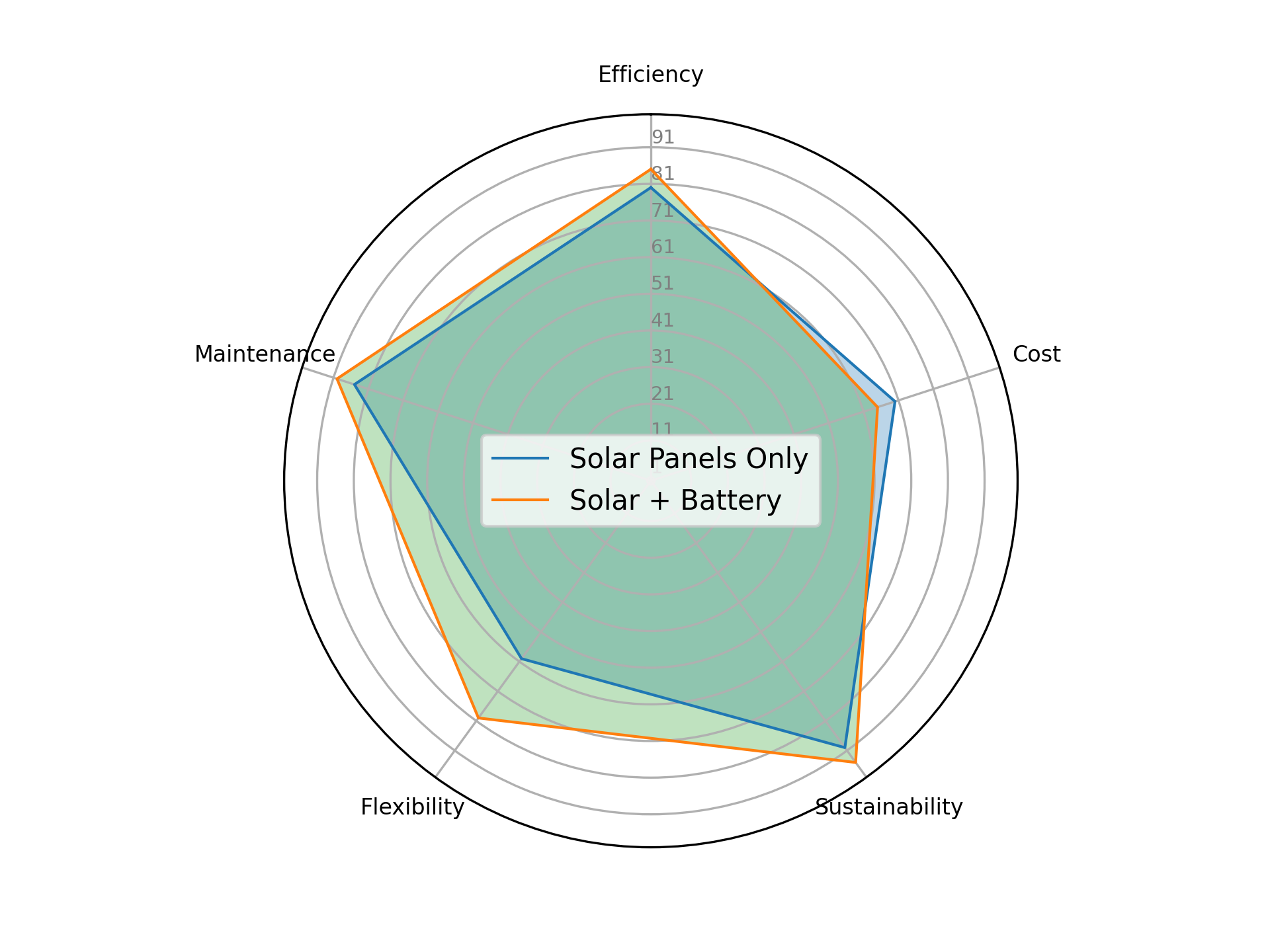The Art of Solar Battery Sizing
The Guide to Solar Battery Size
Today, we're diving into the fascinating realm of Solar Battery Sizing, a crucial aspect of maximizing the potential of your solar power system. Whether you're a residential homeowner or a business owner looking to harness the sun's energy, understanding how to size your solar batteries is the key to unlocking the true potential of your solar investment.
Solar Battery Size Reference Table:
Let's kick things off with a handy reference table that showcases the general battery sizes for both Lead Acid and Lithium-ion options. This table will serve as your compass as we navigate through the nuances of battery sizing:
| Battery Type | Capacity Range | Ideal For |
|---|---|---|
| Lead Acid | 100Ah - 600Ah | Off-grid systems |
| Lithium-ion | 5kWh - 100kWh | Grid-tie systems |
Lead Acid Sizing: Tailoring Energy Storage
Lead Acid batteries have long been the stalwarts of off-grid solar systems, offering reliable energy storage for remote locations. The sizing process involves considering factors like daily energy consumption, autonomy days (number of days the battery should sustain your energy needs without sun), and temperature fluctuations.
Lithium Sizing: Power-Dense Energy Storage
Lithium-ion batteries have revolutionized solar energy storage with their high energy density and longevity. To size a lithium battery bank, factor in peak energy usage, available sunlight hours, and desired depth of discharge.
Other Factors Influencing Battery Sizing
Don't overlook critical variables like your geographical location, weather patterns, and shading analysis. These factors can significantly impact the optimal size of your solar battery bank and its overall efficiency.
Grid-Tie Solar PV System Sizing
When sizing a grid-tie solar PV system, balance is key. The PV-Watts tool, a remarkable online calculator, empowers you to optimize system size for locations with less-than-ideal solar conditions, ensuring your solar array operates at peak performance.
Inverter Sizing for Grid-Tie Systems
Your inverter, the heart of your solar system, needs careful sizing to accommodate the power output of your solar panels. A correctly sized inverter guarantees efficient conversion of DC power to AC power for grid-tie systems.
Snow Cover & Shading
Mitigating the impact of snow cover and shading is paramount. Proper system design and positioning can minimize losses, ensuring consistent energy generation even in challenging conditions.
Off-Grid Systems with Battery Banks
For those embracing full energy independence, sizing your battery bank for an off-grid system is pivotal. Consider factors like load demands, sun hours, and battery chemistry to engineer a robust and reliable setup.
Battery Bank Sizing
The battery bank is the backbone of an off-grid system. Sizing involves calculating total energy consumption, days of autonomy, and depth of discharge. This equation ensures you're well-equipped even during extended periods of low sunlight.
Inverter Sizing for Off-Grid Systems
Matching your inverter to your battery bank size guarantees efficient energy conversion. An inverter too small will limit your system's capacity, while an oversized one may lead to wastage. Finding that "Goldilocks" inverter is the key.
Calculating Solar Battery Bank Size
Calculating your solar battery bank size is a blend of science and strategy. By factoring in daily energy consumption, days of autonomy, depth of discharge, and efficiency losses, you can pinpoint the ideal capacity to meet your needs.
Battery Bank Calculator
Leverage technology to your advantage with online battery bank calculators. These tools streamline the sizing process by crunching the numbers for you, leaving you with a clear picture of your energy requirements.
Amp Hours Calculation
Calculating Amp Hours involves assessing how much energy your devices consume and how long they operate. This foundational metric is integral to sizing your battery bank and understanding its performance capabilities.
Frequently Asked Questions (FAQ)
-
To determine the right battery size for your solar system, consider your daily energy consumption, desired days of autonomy (how long the battery should sustain your energy needs without sunlight), and any factors like weather or shading that might affect energy production. It's best to consult with a solar expert for precise sizing.
-
The best size for a solar battery depends on your specific energy needs and goals. Generally, a battery with a capacity that matches your daily energy consumption and provides the desired days of autonomy is considered ideal. Lithium-ion batteries are popular for their high energy density and long lifespan.
-
For a 1000-watt solar panel system, you'll want a battery bank with sufficient capacity to store excess energy. A rule of thumb is to aim for a battery bank with a capacity between 5kWh to 10kWh to ensure effective energy storage and utilization.
-
The number of batteries needed for a 10kW solar system depends on factors like battery capacity and desired days of autonomy. Typically, for an off-grid system, you might need a battery bank with a total capacity of 20kWh to 30kWh, which could consist of multiple batteries to achieve the desired capacity and backup time. Consult a professional for precise sizing based on your specific needs.
Conclusion: Selecting the Perfect Battery for Solar
Lastly, the choice of battery technology is paramount. Consider factors like energy density, cycle life, and maintenance requirements when selecting between Lead Acid and Lithium-ion batteries. A choice well-made ensures years of efficient energy storage.
With this comprehensive guide, you're now equipped to conquer the intricate world of solar battery sizing. Remember, ESS Solar is here to empower your sustainable energy journey, from sizing to installation and beyond. Harness the power of the sun, backed by precise calculations and expert guidance. Until next time, shine on!






